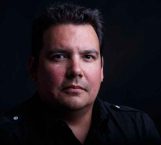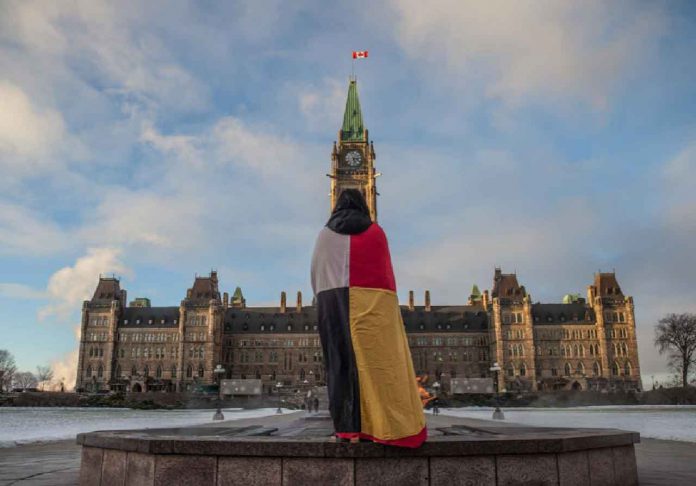There’s a saying in the Indigenous community: when an elder dies, it’s like the burning of a library.
An elder is a living institution, a compilation of stories, histories, and poetry. When they go, all that’s left is those who partook in this knowledge.
The Anishinaabeg nation (my people) lost a library, when activist, writer, and spiritual leader Grand Chief Edward Benton-Banai died Nov. 30. He was 89.
Many knew him as author of the bestselling The Mishomis Book: the Voice of the Ojibway, telling the creation story of the Anishinaabeg people. Some knew him as co-founder of the American Indian Movement, the most influential Indigenous activist organization of the modern era.
For Anishinaabeg, however, we knew him by his traditional name, Bawdwaywidun-Banaise — “the sound of the approaching thunders,” but he preferred “messenger.”
Those in ceremony simply called him dede (father).
He earned these names, spending his life advocating for Anishinaabeg culture and community in the most dire circumstances; nurturing, fostering, and overseeing growth in the face of government policies, violence, and genocide.
Benton-Banai was not a “grand chief” recognized by the Indian Act or U.S. Bureau of Indian Affairs, but recognized by Anishinaabeg in our traditional governing, academic, and spiritual institution: the Midewiwin lodge.
Midewiwin means “way of the heart” and is a ceremonial space recreated four times a year in different locations across different communities. Its purpose is not religious (indeed, there is no such thing as Indigenous “religion”) but to evoke, grow, and heal Anishinaabeg — the mind, body, heart, and spirit of our people.
Attending a Midewiwin lodge is like a political rally, celebration, potluck and classroom, all at the same time. There, we talk about everything Anishinaabeg: from saving our language to raising our children to protecting land and water to philosophizing why we are all here and what our purpose is.
Much of it involves tears, laughter, gift giving, and a whole lot of storytelling, food, and negotiation.
The Wisconsin-born Benton-Banai was at the heart of it all.

While there are many Midewiwin lodges today (including a few in Manitoba), barely any existed when he restarted one in 1970s Wisconsin. In those days, it was just Benton-Banai and a few others sitting around a circle (when my family got to know him).
His lodge would grow into the Three Fires Midewiwin society, a massive community of tens of thousands spread throughout Anishinaabeg communities across state, province, and international borders.
The lodge Benton-Banai re-established reconnected the true Anishinaabeg nation across the Great Lakes, up towards Hudson Bay, and along the rivers of the plains. He took the knowledge he gained as a child and rebuilt relationships frayed by colonization.
At the same time, he co-founded the American Indian Movement, a group that advocated for Indigenous rights at a time when stealing land, removing children, and driving communities into poverty and despair was the norm.
While most know AIM from its involvement in 1970s high-profile land occupations at Wounded Knee, S.D., and the former U.S. prison on Alcatraz Island, the group was first and foremost a community-based volunteer organization. It delivered food, protected families from crime, and built education programs that helped Indigenous children learn their languages and cultures.
One of the first, the Red School House in St. Paul, Minn., was founded by Benton-Banai, who was a teacher there and published The Mishomis Book as a textbook.
Benton-Banai would later help develop the first Anishinaabe university: Shingwauk Kinoomaage Gamig in Sault Ste. Marie, Ont., which teaches students in a Midewiwin lodge, in the Anishinaabe language, about Anishinaabe culture, philosophy and history. In the meantime, he achieved two doctorate degrees.
His true credentials though came from his time in the lodge.
His primary gift was in helping Anishinaabe learn and adopt traditional ways through what we call “initiation.” Benton-Banai performed the year-long initiation ceremony for all of my family, including my daughter. He also did this for hundreds of Anishinaabeg, instilling pride in tens of thousands more as a result.
He gave traditional names to hundreds, and helped uncover long-lost ancestral ties. He adopted dozens who lost their parents. He helped return lodges to communities, whenever asked. He was never perfect, often talking about his time in jail, recovering from alcohol and drugs, and making many mistakes along the way.
He was an uncle, father, and grandfather to us all.
His library may be gone, but his words will never be forgotten.
Miigwech dede, k’zaagin.
 Niigaan Sinclair
Niigaan Sinclair
Originally appeared in the Winnipeg Free Press in December 2020. Republished with the permission of the author.
The views, opinions, and positions expressed by all columnists and contributors are the author’s alone. They do not inherently or expressly reflect the views, opinions and/or positions of NetNewsLedger.

